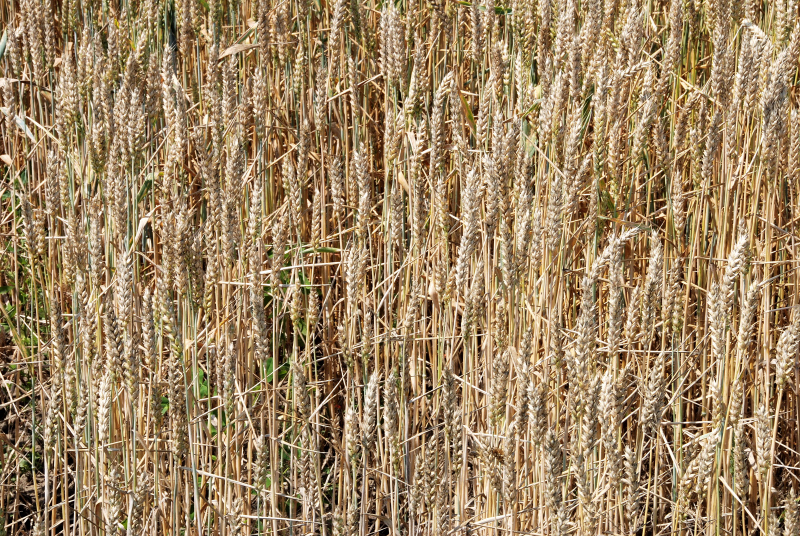What is Hydrolyzed Wheat Protein
It consists of gluten modified by acids or enzymes. It is the protein of the hydrated grain that contains the oligosaccharides of the wheat.

The name describes the structure of the molecule
- "Hydrolyzed" indicates that the wheat proteins have been broken down into smaller peptides and amino acids through a hydrolysis process.
- "Wheat Protein" refers to the original proteins present in wheat germ.
Description of raw materials used in production
Wheat germ: The most nutritious part of the wheat kernel.
Water, acids, or enzymes: Used to break down the wheat proteins during hydrolysis.
Step-by-step summary of its industrial chemical synthesis process.
- Extraction of proteins from wheat germ.
- The extracted proteins are then subjected to hydrolysis using water, acids, or enzymes.
- This hydrolysis process breaks down the proteins into smaller peptides and amino acids.
- The product is then filtered and purified to remove any impurities.
- The hydrolyzed wheat protein is then dried and formed into the desired shape, such as powder or liquid.
What is it for?
Cosmetics
Skin conditioning agent. It is the mainstay of topical skin treatment as it has the function of restoring, increasing or improving skin tolerance to external factors, including melanocyte tolerance. The most important function of the conditioning agent is to prevent skin dehydration, but the subject is rather complex and involves emollients and humectants that can be added in the formulation.
Hair conditioning agent. A significant number of ingredients with specific and targeted purposes may co-exist in hair shampoo formulations: cleansers, conditioners, thickeners, matting agents, sequestering agents, fragrances, preservatives, special additives. However, the indispensable ingredients are the cleansers and conditioners as they are necessary and sufficient for hair cleansing and manageability. The others act as commercial and non-essential auxiliaries such as: appearance, fragrance, colouring, etc. Hair conditioning agents have the task of increasing shine, manageability and volume, and reducing static electricity, especially after treatments such as colouring, ironing, waving, drying and brushing. They are, in practice, dispersants that may contain cationic surfactants, thickeners, emollients, polymers. The typology of hair conditioning agents includes: intensive conditioners, instant conditioners, thickening conditioners, drying conditioners. They can perform their task generally accompanied by other different ingredients.
Antistatic agent. Static electricity build-up has a direct influence on products and causes electrostatic adsorption. The antistatic ingredient reduces static build-up and surface resistivity on the surface of the skin and hair.
Safety
The Cosmetic Ingredient Review (CIR) Expert Panel (Panel) reviewed the product use, formulation, and safety data on hydrolyzed wheat protein and hydrolyzed wheat gluten, which function as skin- and hair-conditioning agents. The Panel determined that data from clinical and laboratory studies were sufficient to demonstrate that these ingredients will not elicit type 1 immediate hypersensitivity reactions in sensitized individuals and will not induce sensitization when the polypeptide lengths of the hydrolysates do not exceed 30 amino acids. The Panel concluded that hydrolyzed wheat gluten and hydrolyzed wheat protein are safe for use in cosmetics when formulated to restrict peptides to an average molecular weight of 3,500 Da or less (3).
However there have been cases of specific allergy to the component (2).
Hydrolyzed wheat protein (HWP) is derived by hydrolyzing gluten, a typical allergen of wheat. It has been found that HWP can induce IgE-mediated hypersensitivity through percutaneous sensitization or ingestion of wheat protein
CAS : 70084-87-6
Synonyms :
- Wheat gluten, enzyme-modified
- Hydrolyzed wheat protein
- Proteins, wheat, hydrolyzed
References____________________________________________________
(1) Burnett C, Bergfeld WF, Belsito DV, Hill RA, Klaassen CD, Liebler DC, Marks JG Jr, Shank RC, Slaga TJ, Snyder PW, Andersen FA, Heldreth B. Safety Assessment of Hydrolyzed Wheat Protein and Hydrolyzed Wheat Gluten as Used in Cosmetics. Int J Toxicol. 2018 May/Jun;37(1_suppl):55S-66S. doi: 10.1177/1091581818776013.
(2) Kobayashi T, Ito T, Kawakami H, Fuzishiro K, Hirano H, Okubo Y, Tsuboi R. Eighteen cases of wheat allergy and wheat-dependent exercise-induced urticaria/anaphylaxis sensitized by hydrolyzed wheat protein in soap. Int J Dermatol. 2015 Aug;54(8):e302-5. doi: 10.1111/ijd.12767.
Hirata JI, Ohya M, Kumon K. Diagnosis and long-term management of hydrolyzed wheat protein wheat-dependent exercise-induced anaphylaxis. Acute Med Surg. 2015 Apr 27;2(4):260-262. doi: 10.1002/ams2.114.
Sugiyama A, Kishikawa R, Shimoda T, Nishie H, Shimada K, Iwanaga T, Furue M, Nishima S. Clinical aspects of 41 cases performed challenge test with immediate-type wheat allergy due to hydrolyzed wheat protein (HWP-IWA). Arerugi. 2014 Jun;63(6):775-86.


![]() Proteine del grano idrolizzate
Proteine del grano idrolizzate